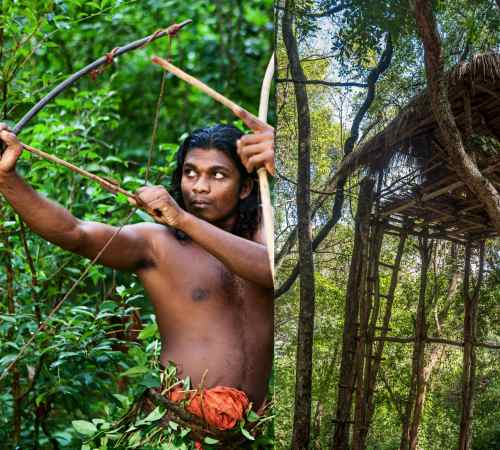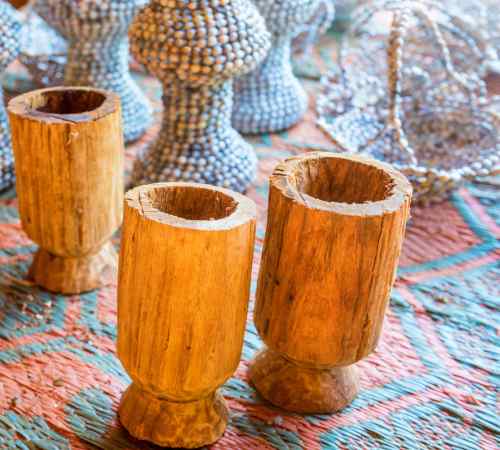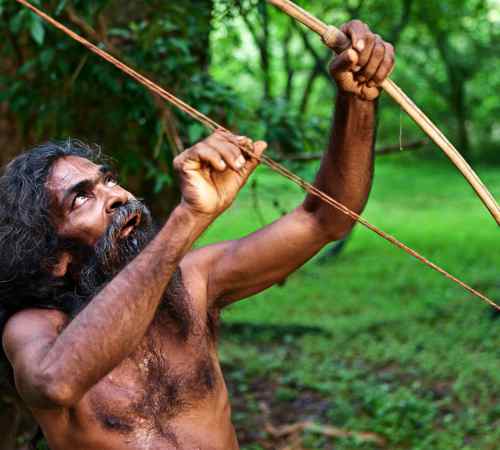Dambana: A Glimpse into the Indigenous Veddah Community's Timeless Culture
Nestled deep within the verdant forests of Sri Lanka lies Dambana, a place where time seems to stand still. Here, amidst the enchanting beauty of the natural world, resides the indigenous Veddah community, one of the oldest inhabitants of the island. Stepping into Dambana is like entering a portal to a bygone era, where ancient traditions, cultural richness, and a deep connection with the land intertwine. In this article, we delve into the heart of Dambana, exploring the unique lifestyle, customs, and heritage of the Veddah people.
History and Origins: The Veddah community has a history that stretches back thousands of years, believed to be descended from the island’s earliest inhabitants. They possess a distinct language, known as Veddah, and have a deep connection to the forests that surround their village. Traditionally, the Veddah were hunter-gatherers, relying on their intimate knowledge of the forest and its resources for sustenance.
Way of Life: The Veddah people’s way of life is deeply rooted in their ancient traditions. Living in harmony with nature, they practice sustainable methods of hunting, gathering, and agriculture, passed down through generations. The Veddah possess a profound understanding of medicinal plants, using traditional herbal remedies to treat ailments.
Culture and Beliefs: The cultural fabric of the Veddah community is woven with myths, folklore, and rituals that have been preserved over centuries. Their vibrant oral traditions, passed down through storytelling, give insight into their worldview and spiritual beliefs. The Veddah worship a pantheon of deities, including those associated with nature and ancestral spirits, reflecting their deep reverence for the natural world.
Dambana Village: Dambana serves as the heart of the Veddah community, offering visitors a unique opportunity to experience their way of life. The village is characterized by simple thatched-roof huts, built using materials found in the forest. The inhabitants warmly welcome visitors, sharing their customs, rituals, and daily activities. Exploring the village, one can witness traditional crafts, such as bow and arrow making, pottery, and basket weaving, which are integral to their cultural heritage.
Cultural Experiences: Visiting Dambana provides an immersive cultural experience like no other. Engaging with the Veddah community allows travelers to participate in traditional dances, music, and storytelling sessions. You can witness captivating performances showcasing their unique musical instruments, such as the raban, a traditional drum, and the horanawa, a wind instrument. This firsthand encounter with the Veddah culture offers a profound appreciation for their resilience and enduring traditions.
Preserving Heritage: Despite the challenges faced by the Veddah community, including encroachment on their lands and changing societal dynamics, efforts are being made to preserve their heritage. Organizations and initiatives are working hand-in-hand with the Veddah to promote their cultural preservation, raise awareness about their way of life, and provide economic opportunities that align with their values.
Sustainable Tourism: When visiting Dambana, it is essential to embrace sustainable tourism practices. Respect for the environment, cultural sensitivity, and responsible travel are vital. Supporting community-based tourism initiatives ensures that the Veddah community benefits directly from the presence of visitors, empowering them to preserve their traditions while improving their quality of life.
Conclusion: Dambana, the abode of the indigenous Veddah community, offers an extraordinary journey into a world shaped by ancient traditions and a profound connection with nature. It is a place where modernity and timelessness intertwine, inviting visitors to step into a cultural tapestry that has endured through millennia.


